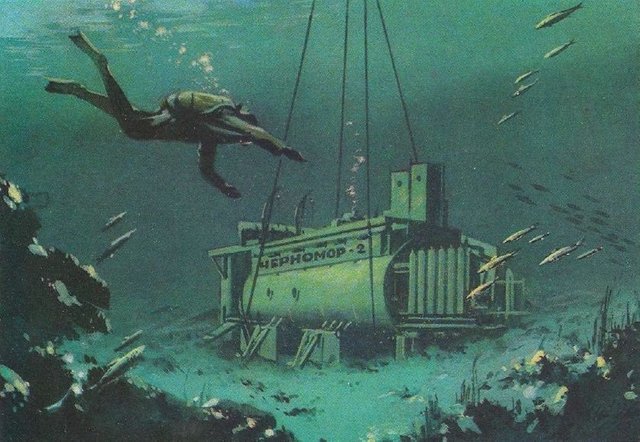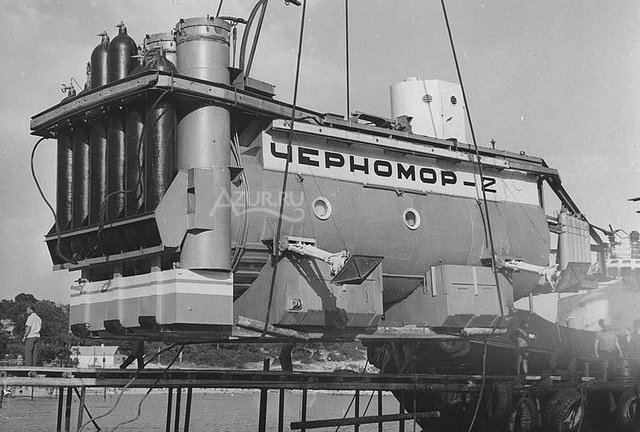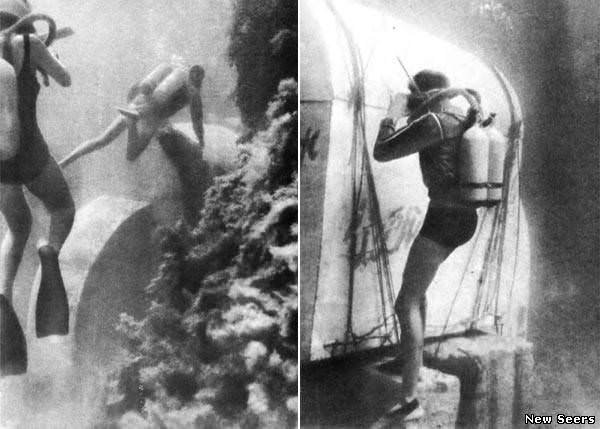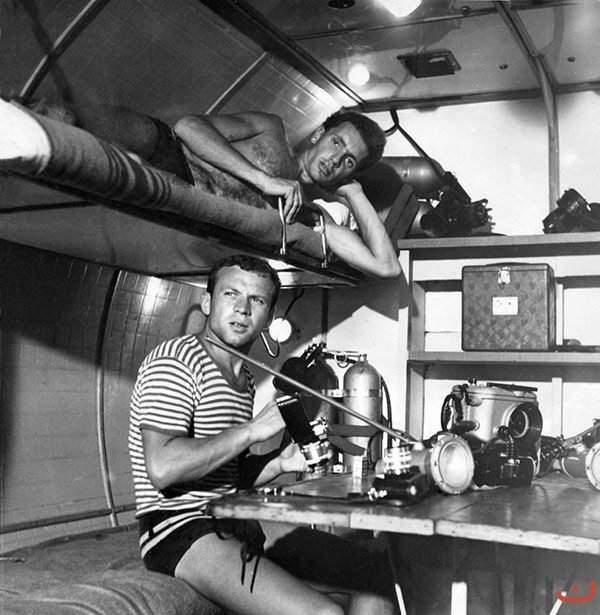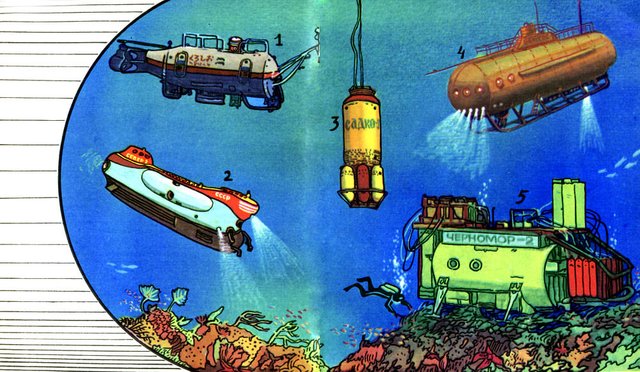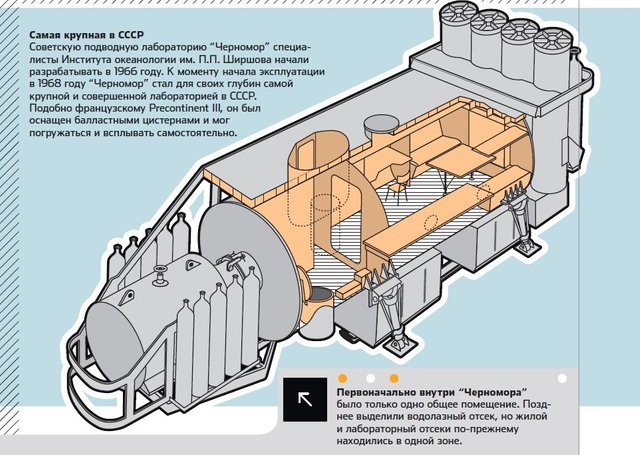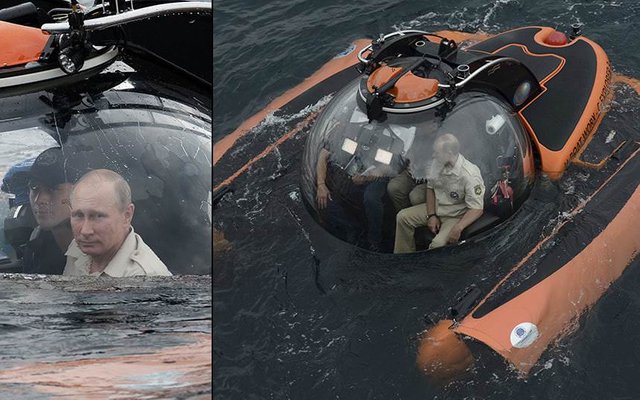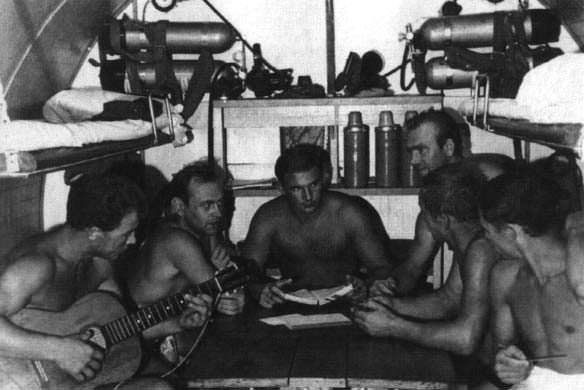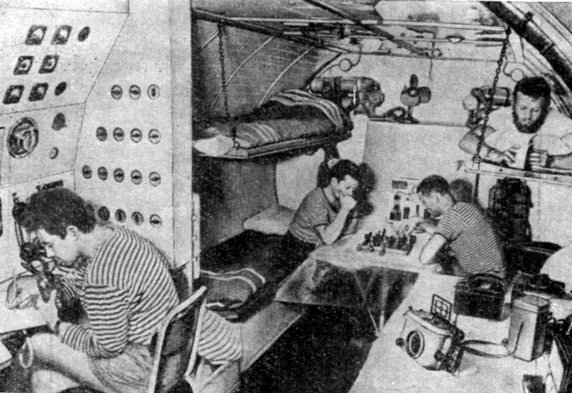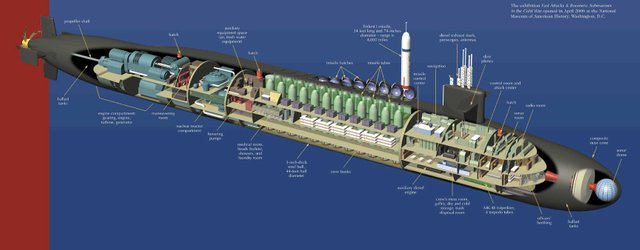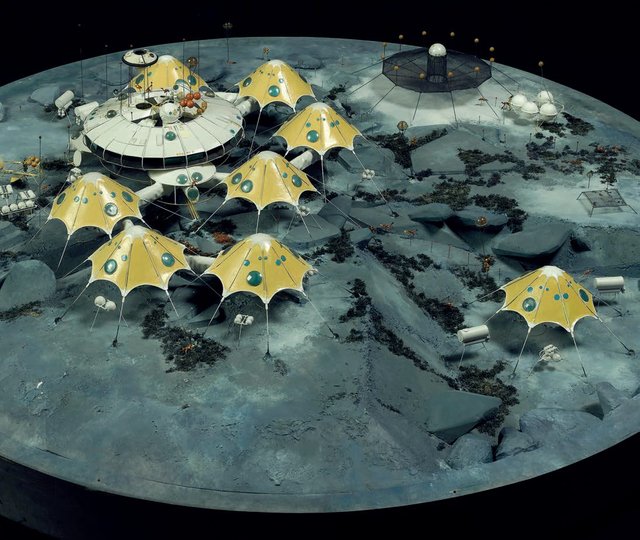Historical Underwater Habitat Showcase, Part 11: Chernomor II (Patreon)
Content
I've covered almost entirely US underwater habitats so far, which I plan to rectify with a couple of articles on the Soviet side of the 'Man in the Sea' era. At the same time that the US and Soviet Union were racing to the Moon, there was another, less widely publicized race to establish bases within the ocean and populate them.
Chernomor II followed early experiments by private citizens, the so called Icthyander Project, which captured the attention of the Soviet government. It was an impressive habitat in many respects. It was designed for mobility and so could easily raise itself with ballast tanks for repositioning. It was outfitted with a wide variety of scientific instruments relevant to marine research as well.
The interior was very austere, as is typical of these structures, but also of anything built by the Soviet government. Gotta have the framed picture of Stalin however. Can't be exploring the deep without that, the fish must also be indoctrinated.
It was followed by a few other Soviet undersea habitat projects I'll cover in the future, but Chernomor II was the most ambitious. As I recall, like Sealab 2 and 3, Chernomor II was really just an upgraded Chernomor I. Also similar to Sealab III, it resulted in a lethal disaster.
They made an easily avoidable blunder by ballasting Chernomor only enough so it would sink. It was not deep enough to escape the influence of surface weather, and because they neglected to overballast it, a storm came along which pushed Chernomor all the way to shore.
Because the Soviet aquanauts were saturated at the time, this resulted in their painful death from the bends. The Soviet regime was as reckless with their manned undersea projects as they were with their manned rocket launches. Their willingness to throw human lives away in order to advance more quickly resulted in some impressive technical achievements, but a list of casualties too long to report here.
They weren't done, however. Where the Sealab program came to a halt as soon as the first aquanaut died, the Soviet man in the sea program chugged ahead indifferent to their own human losses. The Soviets had big plans for the ocean, as a source of minerals, food and energy...as well as the battlefield of the 21st century.
They weren't wrong. Even after the collapse of the Soviet Union, the Russian Federation has shown keen, ever-increasing interest in undersea domination. From laying claim to the sea bed beneath the North Pole, to development of a next generation nuclear submarine even bigger than the Typhoon class, previous record holder for size.
However, the Soviet and US sea race, despite lofty claims about man's quest to better understand the sea...was ultimately military in nature. The habitats were developed so that aquanauts from either world power could tap into undersea communication cables.
Not much has changed in that respect. Renewed US, Chinese and Russian interest in the ocean remains focused on military uses, and resource development. The enormous new submarine class is reportedly for "Arctic research" which translates to oil exploration, and Chinese efforts to establish an underwater base in the South China Sea are reportedly military in nature as well.
If that surprises you, it shouldn't. There were 70 undersea habitats in history. Today there are three, only one of which operates in the open ocean for scientific purposes. Meanwhile the US alone operates a fleet of 75 nuclear submarines, each of which is larger inside than several habitats of the type I've covered here:
It just goes to show that science does not motivate public spending even a fraction as effectively as fear. The new generation of deep sea bases are only being built because of contention over dwindling resources, and desire to control the oceans as climate change melts the polar ice caps.
So it is that I predict, if ever there's an extensive human presence on the ocean floor, it will be for military reasons. Love it or hate it, the fact of the matter is that just like during the Cold War, nothing makes governments splash money around for expensive hostile environment habitation projects quite like good old fashioned fear.
More to come, watch this space.
